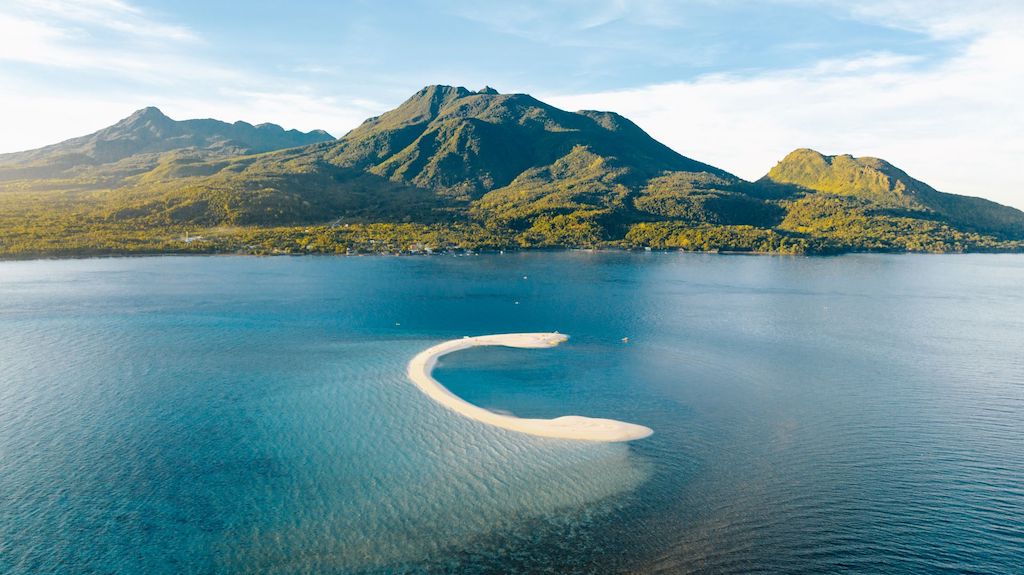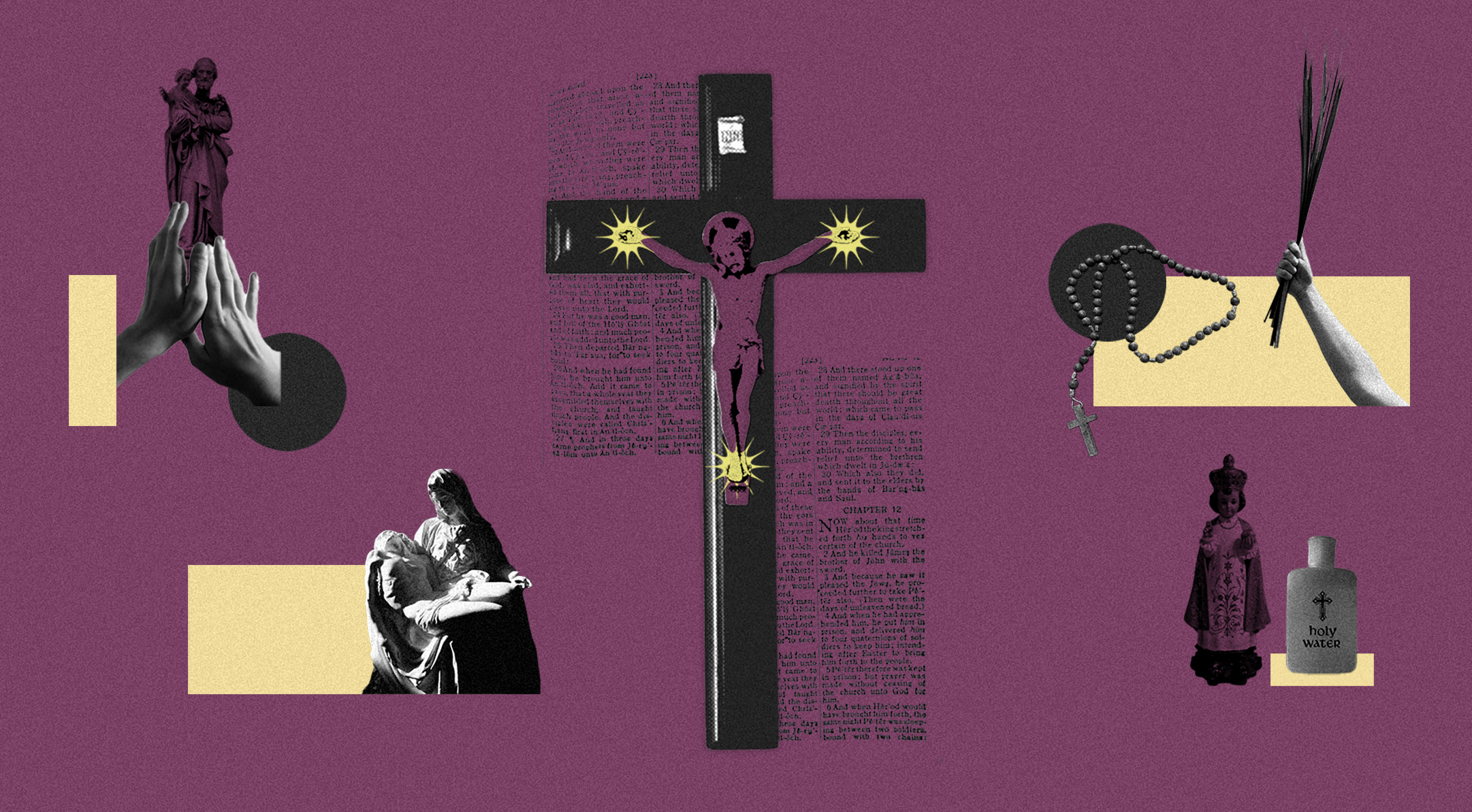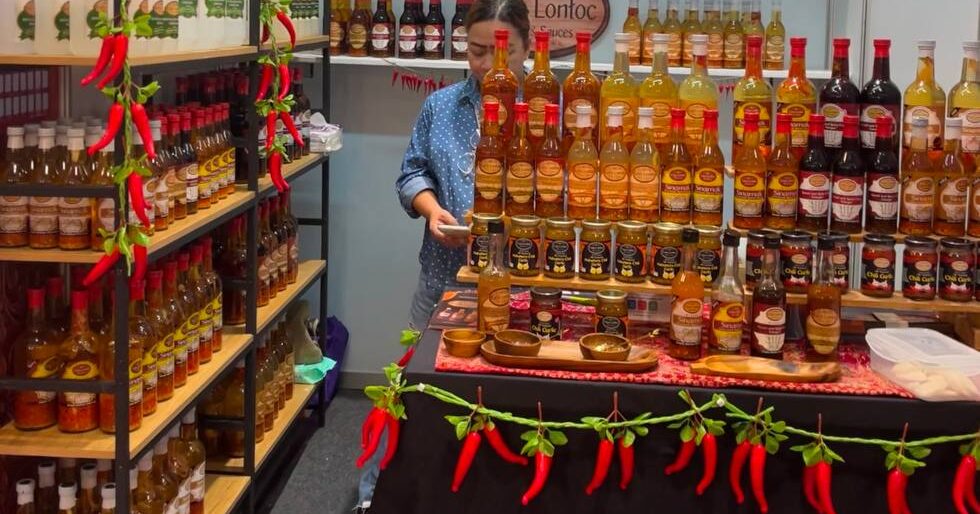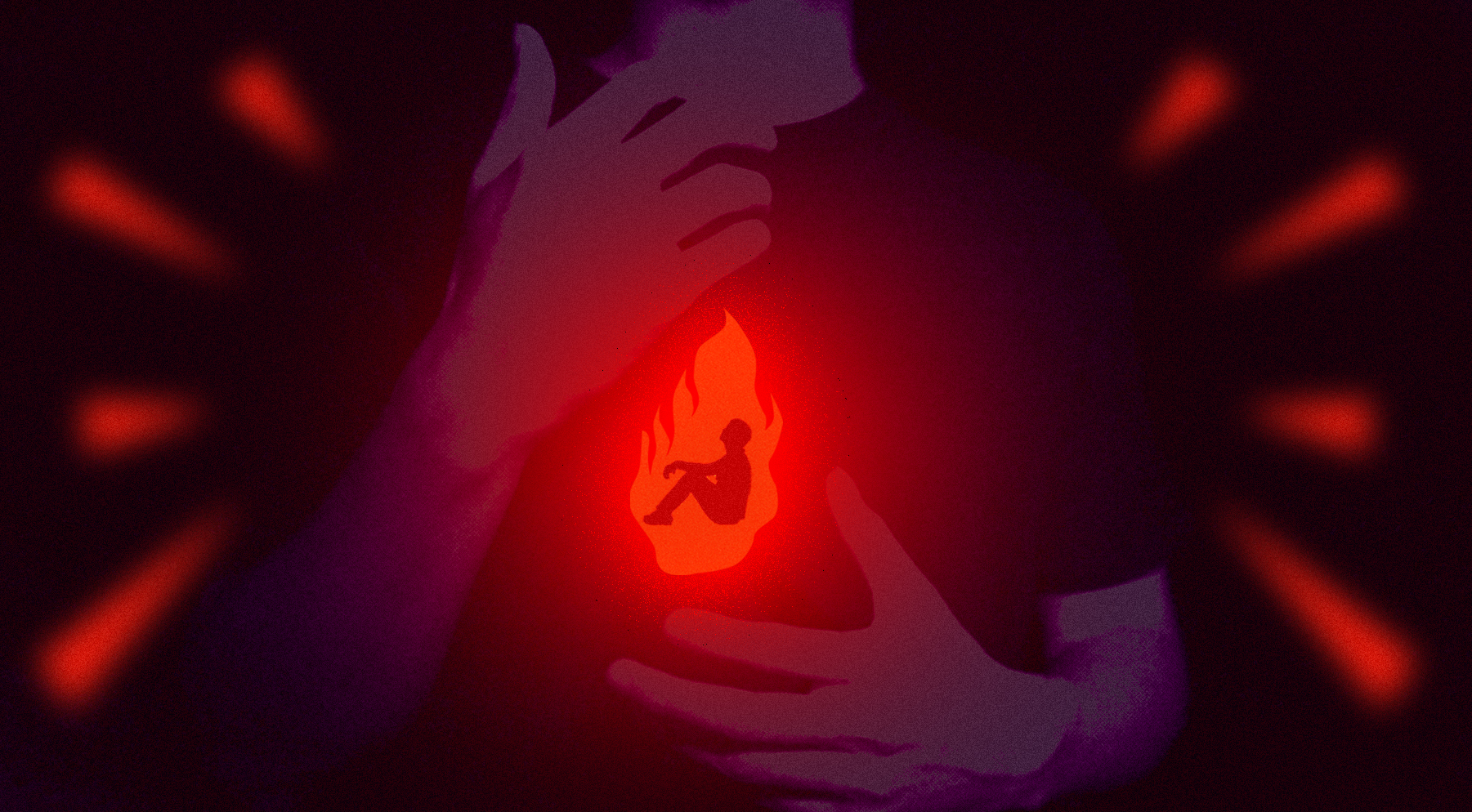The island’s multitude of landscapes shaped by its volcanic past is the perfect backdrop for temporal disremembrance
You only need 48 hours to fully experience Camiguin, most travel guides say—24 or less if you ask locals. It is, after all, the second smallest province after Batanes.
There are only 64 kilometers of road, our tour guide tells us. The best way to go around is by motorbike. A rental will cost you anywhere between P500 to P800, more expensive than Siargao rates, an El Nido transplant protests.
Factoring in the flight from Manila—more or less an hour and a half long one way via the only airline that flies direct a few days a week: Sunlight Air—you still have plenty of hours to spare.
But because Camiguin is geographically diverse and replete with volcanoes (seven—that are known! Locals say there are 14), mountains, beaches, waterfalls, springs, and forests, you will definitely need more than a day to really get through all of it.
Or you can stay in one area and take it all in. That I wish I did after two days of wandering around the island’s terrestrially varied landscapes, desperate to make the most of our stay at luxury resort Nouveau and its fudgy tsokolate tablea gelato and Peking duck three ways. That still counts as a Camiguin experience, I guess?
“This modest work is nothing more than a few insignificant observations, which patiently and out of curiosity, I have succeeded in putting together in my leisurely moments.”
Staring into what an endless stretch of sea interrupted only by a minuscule Mantigue Island, I wonder which Camiguin view Don Vicente Elio y Sanchez, a contemporary of Jose Rizal and Juan Luna, was looking at when he wrote one of the few historical materials of the locale, “Historia de la Isla de Camiguin.”
Or what the other people who came before him—the island’s first inhabitants, the Manobos from Surigao; Ferdinand Magellan, who allegedly stopped there briefly in 1521 for freshwater; the Portuguese captain, who converted the rulers to Christianity in 1538; the Moluccans and the Portuguese, who ravaged the coasts and killed its people in 1563; Miguel Lopez de Legazpi, who landed two years later to empty houses as the locals hid in the forest, wary of foreigners; and the missionaries, who were forced to leave in the early 1700s as the natives learned how to fight back—saw.
Referring to a census in the 1900s, Sanchez says that of the island’s 25,000 inhabitants, 4,000 to 5,000 are transients “who usually make up a floating population.” Vagabonds or what counted then as “tourists” I assume—for leisure or labor, or sheer necessity, we may never know. And yet, he says, “this beautiful island was hardly known” until after a catastrophe in 1871: The eruption of Mt. Vulcan that sunk parts of the town of Catarman.
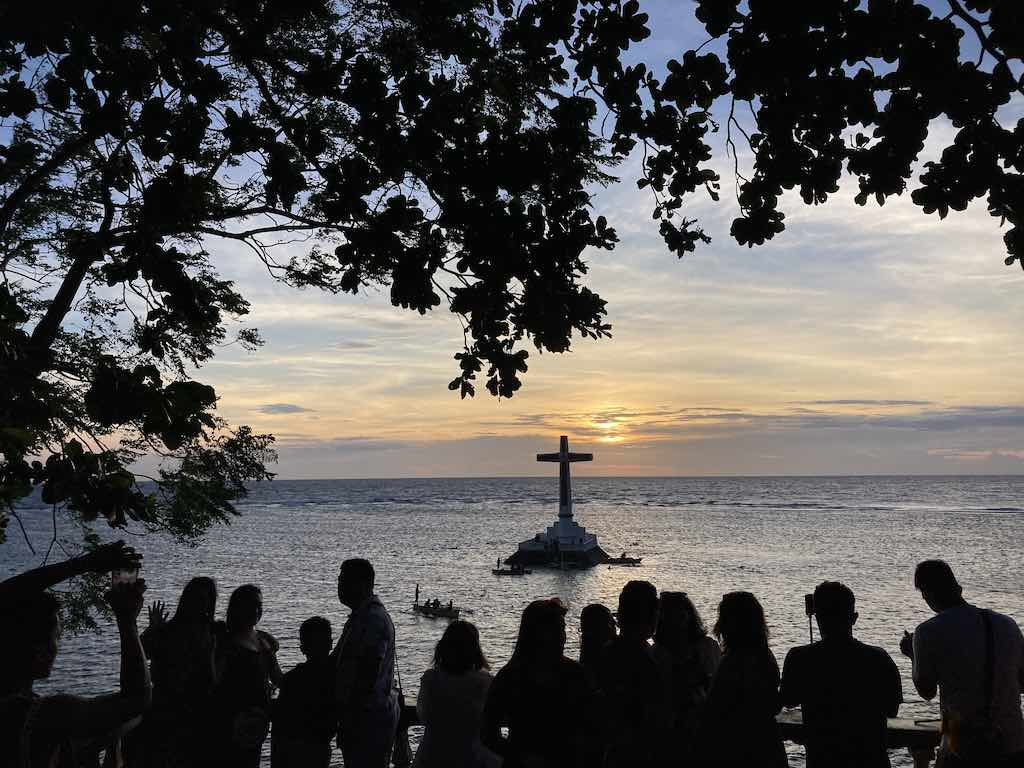
Sanchez was partly correct in his assumption. Today, two of the most famous tourist spots in Camiguin are in Catarman, wrought by the eruption: the Sunken Cemetery and the Old Church Ruins
Of its seven volcanoes, only one—the youngest, Mt. Hibok Hibok—remains active, although it has been decades since it last erupted in 1951.
Time magazine, a week after the disaster that decimated approximately 3,000 Camiguinons, reported: “Over the centuries, Camiguin’s craters benevolently poured forth soil-enriching lava which made the island abundant beyond the asking. But in periodic moments of ire, the volcanoes visited havoc and death on the people—always, said the elders, because God had been displeased by younger Camigueños who grew lax in their churchgoing, forgetful of the feast days and neglectful of the sign of the cross.”
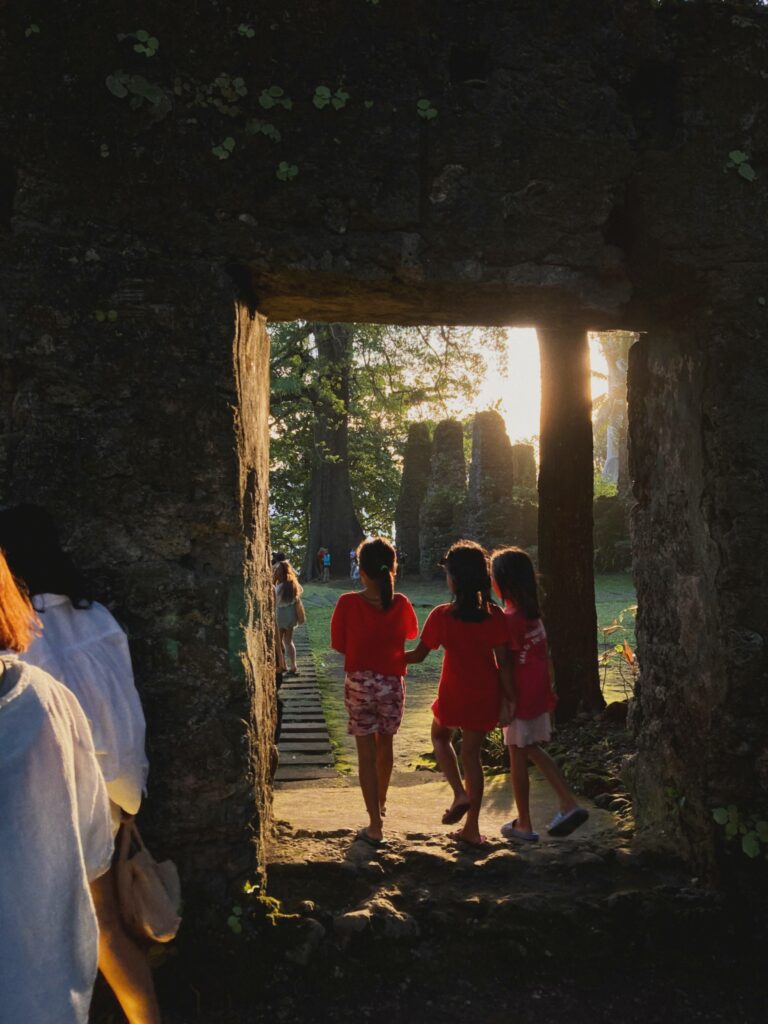
So severe its casualties were that it prompted the creation of the country’s first government agency mandated to “safeguard life and property against volcanic eruptions and its dangers.” The Commission on Volcanology (COMVOL), now the Philippine Institute of Volcanology and Seismology (PHIVOLCS), was created on June 20, 1952 through Republic Act No. 766.
The island’s volatile past birthed “beauty” and abundance (its rich volcanic soil is a necessary condition for its sweet lanzones) just as it erased collective memory.
People learn to live with impending doom, within them and outside themselves. It helps too when you live somewhere that constantly distracts you with its gentler possibilities
“There are barely any ethno-historical records, which explain how the island’s current blend came about,” laments anthropologist and author of “The Untold Stories of Camiguin Island” Andrés Narros Lluch. For his attempt, he consulted the history of the victors: that of the Augustinian Recollects in Camiguin, who stayed for more than 200 years establishing Catarman and three other towns that all fell under their religious jurisdiction.
One point of contention in the island’s remembering is the origin of its name. Lluch’s research posits that the province was named after its first inhabitants, “kimigins,” the Manobo followers of a certain Datu Migin. Another theory traces its name to kamagong, a native tree found in Lake Mainit in Surigao, from where the original settlers migrated. “But etymologically speaking, the word ‘Camiguin’ has no meaning in the Visayan language,” an archaeological survey published in 2010 concluded as if on a dead end.
Nonetheless, all around the island are remnants of its past, of its present and forever state: colors washed out or rusted by gusts of saltwater and wind, fickle weather influenced by its multitude of biomes, an eternal Arcadian idyll seasonally interrupted by a bigger “floating population.”
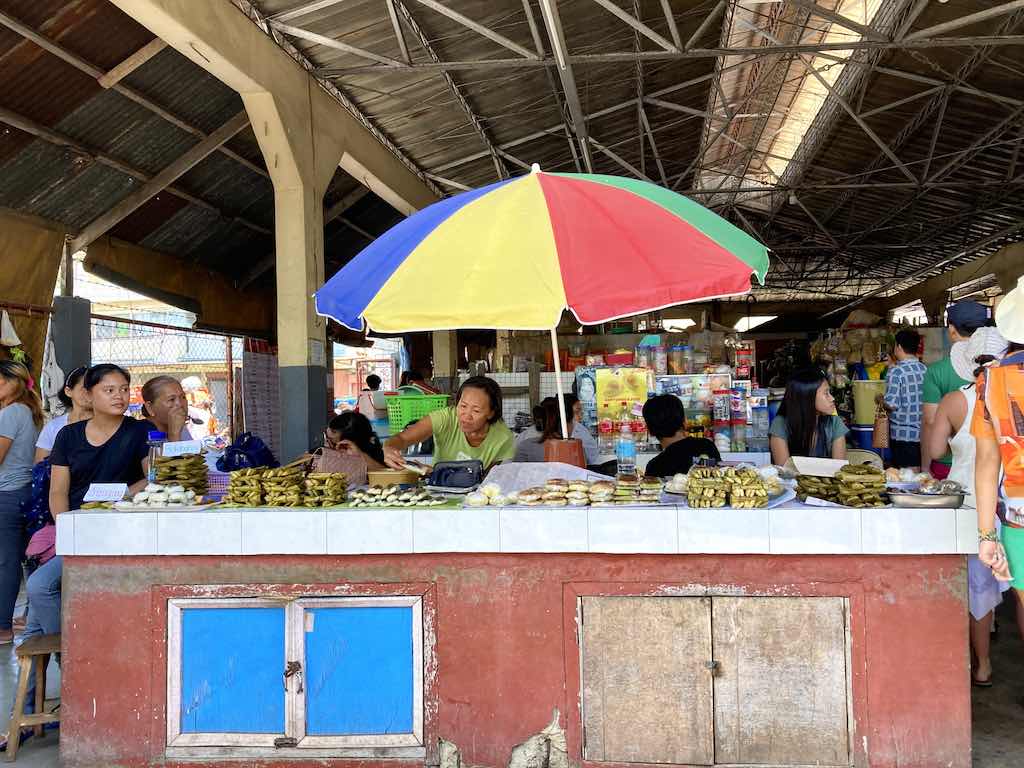
Popular culture will have us believe that the “trouble in paradise” is the “other” among us tourists or internal turmoil that inevitably bubbles up as if stirred by a sudden change of scene. Think Jennifer Coolidge’s gay assailants in “White Lotus” or her self-destructive outburst from having been left alone on a supposed Italian coast honeymoon in the first place.
A more plausible threat is always within nature though, as in M. Night Shyamalan’s time-accelerating beach in “Old.” As in Camiguin’s seven and counting volcanoes, waves that crash from all around the island—elements that once colluded during Mt. Hibok-Hibok’s 1951 eruption making rescue operations even a bigger nightmare.
But eventually, people learn to live with impending doom, within them and outside themselves. It helps too when you live somewhere that constantly distracts you with its gentler possibilities: sunny days with just enough breeze to cancel out humidity. Calmer waters for smoother sailing. Kinder winds that whisper through nimble trees. Billowy clouds that tame the prickly sunlight while allowing generous views of the mountain peaks—things of beauty Camiguinons are lucky to witness more often than God’s supposed wrath.

